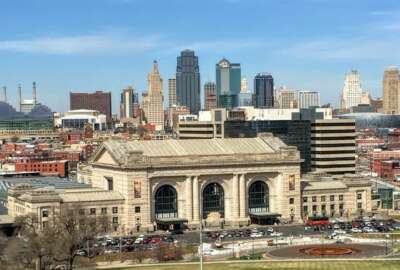
Draining the DC swamp: A plus for your community?
The Trump administration wants to share some of the D.C. wealth by moving jobs — but not necessarily the people in them — to other parts of the nation that...
According to the experts, the three most important things in real estate are: Location, location, and last but not least, location!
Take federal employment — in the Washington, D.C. area a federal job is nice but no big deal. If you don’t work for Uncle Sam odds are somebody in the family, or a neighbor or friend does. And many if not most of us who don’t work directly for Uncle Sam are in jobs, such as real estate, parking lots, the food and entertainment industry, education, travel, banking and media, that depend in large part on federal dollars. Not to mention the flesh-and-blood feds who earn and spend them.
Fifteen percent of the total non-federal workforce is located within the Washington metro area, which has about 6.2 million people.
During the record 35-day shutdown in December and January most of us here learned or relearned two things: When the government is closed traffic moves quicker. Also when several hundred thousand members of the workforce don’t get paid, we in the private sector too feel a little of their pain. The shutdown was a reminder to us inside-the-Beltway types that having a large federal presence is a big reason this is one of the wealthiest, best-educated and best places to live in the nation.
And the Trump administration wants to share some of the D.C. wealth by moving jobs — but not necessarily the people in them — to other parts of the nation that could use the business. The stated idea of draining the D.C. swamp is to get more jobs dealing with agricultural oversight and science out where people grow food, not flowers. Get more jobs related to national parks, conservation and wild horses away from downtown D.C. and closer to the customers. The Interior and Agriculture departments got the ball rolling by announcing plans to move hundreds of national capital region-based workers to Kansas City.
The reaction here was and is shock and anger. Congress and the White House are being warned, by opponents of the move, that many if not most employees will not be making the trek west. All that knowledge and talent will be lost, they warn, if the moves are made. That’s a good and sensible argument to make.
For many communities in the rust, coal or dust bowl belts, the prospect of a GS-7, -11 or -14 civil servant coming to the community should make the chamber of commerce beam. But if that job came to the same community vacant to be filled by local (Kansas, Colorado or Michigan) talent it would be cause for dancing in the streets. Industries come and go. Car manufacturers and assembly plants, like the former Saturn plan in Tennessee or the Nissan plant in Mississippi which plans to cut up to 700 jobs, come and go. Uncle Sam is usually forever. And the jobs targeted to be moved from D.C. over the next few years are better than those promised by Department of Veterans Affairs hospitals or federal prisons that now form the employment-backbone of many towns.
Opponents of the proposed moves include unions and politicians, almost all of them Democrats from D.C., Maryland and Virginia, as well as most of the people slated to be moved. They argue that the move will cost the government experienced and expert talent, and result in a red-tape nightmare as workers fight the move and agencies may be forced to pay buyouts or settlements.
They make a good case except that most people who live beyond the Beltway, i.e. the vast majority of American workers, voters and taxpayers, don’t have a pooch in this political fight. They either hate the idea of D.C. or love the prospect of getting a nice batch of federal jobs sans their Washington incumbents. Take, for instance, these comments from readers:
“Reading the D.C.-based media one gets the impression the [USDA] and Interior moves are a bad thing. On the contrary, bring them on. We have very bright people who can fill them and are closer to both customer bases. And please encourage the people in those jobs in D.C. to stay put. I’m sure they will come up with something.” — Robert in Garden City, Kansas.
“The employees of the departments of Agriculture and Interior who are being told to move or else have three choices: They can move, they can find another job or they can quit and/or retire. Those of us who worked for [the Defense Department] have faced this decision a number of times. It was called [Base Realignment and Closure]. While it is true that future raises and [possibly] retirement will be impacted, the cost of living in those new cities mentioned is less than in D.C. Those employees owning a home in say Alexandria or Arlington [Virginia] will find that their housing dollars will go a lot farther out west.” — Mark G.
Nearly Useless Factoid
By Amelia Brust
Starfish eat inside out, meaning they extend their stomachs out of their mouth and over the digestible parts of their prey, such as mussels and clams. The prey tissue is partially digested externally before a soup-like “chowder” is produced is drawn back into the starfish’s 10 digestive glands.
Source: Science Daily
Copyright © 2025 Federal News Network. All rights reserved. This website is not intended for users located within the European Economic Area.
Mike Causey is senior correspondent for Federal News Network and writes his daily Federal Report column on federal employees’ pay, benefits and retirement.
Follow @mcauseyWFED





